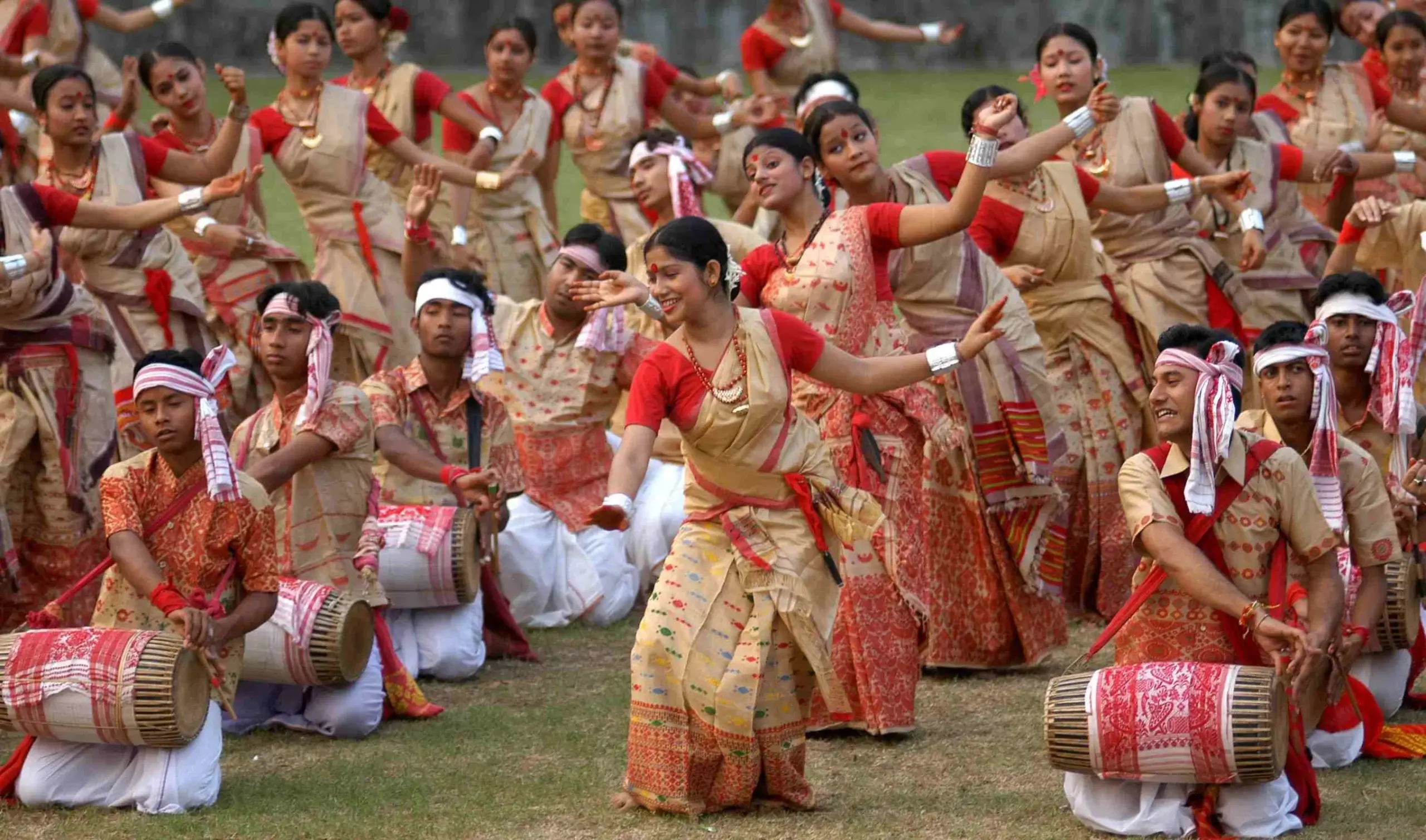Bohag Bihu or Rongali Bihu: The grand festival of Assam

Bohag Bihu, also known as Rongali Bihu, is one of the most important festivals of the Assamese community. It is a three-day long festival, which is celebrated in the month of April, marking the beginning of the Assamese New Year. The festival is not just limited to Assam but is celebrated across the northeastern region of India, with great fervor and enthusiasm.
Bohag Bihu is a time for rejoicing, where people come together to celebrate the start of a new year and also to celebrate the spring season, which is considered to be the season of new beginnings. The festival is celebrated in seven phases, each phase having its own significance and rituals.
The seven pinnacle phases of Bohag Bihu are:

The first phase of the festival is called 'Goru Bihu', which is celebrated on the first day of the festival. On this day, cows and bulls are worshipped, as they are considered to be a symbol of wealth and prosperity. The cows and bulls are decorated with flowers and are taken out for a procession, while people dance and sing Bihu songs.
The second phase of the festival is called 'Manuh Bihu', which is celebrated on the second day of the festival. On this day, people wear new clothes and visit their friends and relatives, to exchange greetings and sweets. This is also a time for feasting, where people prepare traditional Assamese dishes, such as pitha, larus, and jolpan.
The third phase of the festival is called 'Kutum Bihu', which is the third day of the festival and is dedicated to the celebration of family. People visit their extended family and have a feast together.
The fourth phase of the festival is called 'Senehi Bihu'; Senehi Bihu is the day that is reserved exclusively for lovers. The day symbolizes love and reproduction. On this day youths meet their beloved and give them gifts usually known as “Bihuwan”.
Mela Bihu is the fifth day of the festival and is dedicated to the celebration of community. People organize fairs and cultural programs, and traditional games and sports are played.
Chera Bihu is the sixth day of the festival and is dedicated to the celebration of nature. People clean their houses and surroundings and offer prayers to God for a bountiful harvest.
Bohagi Bidai is the last day of the festival and is dedicated to the farewell of Bohag Bihu. People exchange greetings and express their good wishes for the coming year.
One of the most important aspects of Bohag Bihu is the Bihu dance, which is a traditional folk dance of Assam. The Bihu dance is performed by both men and women and is accompanied by the sound of the dhol, taal, and pepa. The dance is performed in a circular formation, with the dancers moving in a rhythmic pattern, and is a symbol of joy and celebration.
Another important aspect of Bohag Bihu is the preparation of traditional Assamese dishes. Pitha, which is a type of rice cake, is one of the most popular dishes prepared during the festival. Pitha is made using rice flour, jaggery, and coconut, and is steamed in bamboo baskets. Other popular dishes include larus, which are made using rice flour and coconut, and jolpan, which is a breakfast dish made using puffed rice, yogurt, and jaggery.
Bohag Bihu is also a time for cultural programs and competitions, where people showcase their talents in various fields, such as music, dance, and theater. These programs are organized in villages, towns, and cities across Assam, and are a way of promoting and preserving the rich cultural heritage of the state.
In conclusion, Bohag Bihu is a festival that celebrates the spirit of the Assamese community and is a time for rejoicing, feasting, and cultural exchange. The festival is a way of welcoming the spring season and is a time for new beginnings and resolutions. The festival is not just limited to Assam, but is celebrated across the northeastern region of India, and is a symbol of the rich cultural diversity of the region.





